Roland DP990RF Handleiding
Bekijk gratis de handleiding van Roland DP990RF (51 pagina’s), behorend tot de categorie Piano. Deze gids werd als nuttig beoordeeld door 29 mensen en kreeg gemiddeld 3.9 sterren uit 15 reviews. Heb je een vraag over Roland DP990RF of wil je andere gebruikers van dit product iets vragen? Stel een vraag
Pagina 1/51


7
Various Settings................................. 52
Basic Operation in Function Mode ............................52
Sounds Settings................................................................54
Adjusting the Sound’s Brilliance
(Brilliance)..............................................................54
Performing Settings ........................................................54
Specifying What the Key Transpose will
Affect (Transpose Mode)..................................54
Changing the Pitch of the Tone in Octave
Steps (Octave Shift)............................................ 54
Adjusting the Dual Play Volume Balance
(Dual Balance) ......................................................55
Tuning Settings................................................................. 55
Matching the Pitch with Other Instruments
(Master Tuning) ...................................................55
Using a Piano’s Unique Tuning
(Stretch Tuning) .................................................55
Adjusting the Tuning (Temperament)........ 55
Specifying the Temperament Key ................56
Piano Sound Settings...................................................... 56
Producing Sympathetic Resonance When
You Press the Damper Pedal
(Damper Resonance)......................................... 56
Producing the Resonance of the Strings
When the Keys Are Played
(String Resonance) ............................................. 56
Playing Sounds When the Keys Are
Released (Key Off Resonance)........................56
Pedal Settings.................................................................... 56
Changing How the Pedal Effects Are
Applied (Damper Pedal Part).......................... 56
Changing How the Pedals Work
(Center/Left Pedal Function) .........................57
Other Settings....................................................................57
Playing Back at a Fixed Tempo
(Tempo Mute) ......................................................57
Changing the Parts Assigned to the Track
Buttons During SMF Playback
(Track Assign) .......................................................57
Using the Sound of a Specific Part as a
“Guide” (Mute Volume) ....................................57
Setting the Type of CD To be Played Back
(CD/Audio Type) ............................................................... 58
Storing Your Settings
(Memory Backup) ............................................................. 58
Restoring the Factory Settings (Factory Reset) .....58
Connecting to Other Devices ............59
Connecting a Media.........................................................59
Installing the CD Drive ......................................59
Installing the Floppy Disk Drive.....................59
Connecting USB Memory.................................59
Initializing the Memory.....................................60
Changing the External Memory Setting
(External Memory Mode).................................60
Playing Back Songs on External Media .......61
Adjusting the Volume of an Audio File or
Music CD ................................................................62
Changing the Tempo of an Audio File or
Music CD ................................................................62
Changing the Playback Pitch of a Song
(Playback Transpose) .........................................62
Minimizing the Sounds in the Center
(Center Cancel) ....................................................62
Switching VIMA TUNES Recommended
Tones (Recommended Tone) .........................62
Saving Your Recorded Performance on
External Memory .................................................63
Deleting a Song from External Memory .....64
Connecting to Audio Equipment................................65
Having Audio from an External Device be
Sounded Through the DP990F. .....................65
Connecting Speakers to the DP990F and
Outputting Sounds.............................................66
Connecting to MIDI Devices.........................................67
Connecting a MIDI Sequencer to the
DP990F....................................................................67
Producing Sounds from a MIDI Sound
Module by Playing the DP990F......................67
Preventing Doubled Notes When
Connected to a Sequencer
(Local Control)......................................................68
MIDI Transmit Channel Settings
(MIDI Transmit Channel)...................................68
Sending Recorded Performance Data to a
MIDI Device (Composer MIDI Out)................68
Connecting a Computer.................................................69
Using the V-LINK Function ............................................70
Specifying the V-LINK Transmit Channel....70
Appendices
Troubleshooting ...............................................................71
Error Messages...................................................................74
Tone List...............................................................................75
Internal Song List..............................................................78
Parameters Stored in Memory Backup .....................79
Music Files That the DP990F Can Use........................80
Main Specifications..........................................................81
Index......................................................................................83

12
IMPORTANT NOTES
Repairs and Data
• Please be aware that all data contained in the unit’s memory may be
lost when the unit is sent for repairs. Important data should always
be backed up on a USB memory, or written down on paper (when
possible). During repairs, due care is taken to avoid the loss of data.
However, in certain cases (such as when circuitry related to memory
itself is out of order), we regret that it may not be possible to restore
the data, and Roland assumes no liability concerning such loss of
data.
Additional Precautions
• Please be aware that the contents of memory can be irretrievably lost
as a result of a malfunction, or the improper operation of the unit. To
protect yourself against the risk of loosing important data, we
recommend that you periodically save a backup copy of important
data you have stored in the unit’s memory on a USB memory.
• Unfortunately, it may be impossible to restore the contents of data
that was stored on an internal memory, a USB memory or an external
memory once it has been lost. Roland Corporation assumes no
liability concerning such loss of data.
• Use a reasonable amount of care when using the unit’s buttons,
sliders, or other controls; and when using its jacks and connectors.
Rough handling can lead to malfunctions.
• When connecting / disconnecting all cables, grasp the connector
itself—never pull on the cable. This way you will avoid causing
shorts, or damage to the cable’s internal elements.
• To avoid disturbing your neighbors, try to keep the unit’s volume at
reasonable levels. You may prefer to use headphones, so you do not
need to be concerned about those around you (especially when it is
late at night).
• When you need to transport the unit, pack it in shock-absorbent
material. Transporting the unit without doing so can cause it to
become scratched or damaged, and could lead to malfunction.
• Do not apply undue force to the music rest while it is in use.
• Some connection cables contain resistors. Do not use cables that
incorporate resistors for connecting to this unit. The use of such
cables can cause the sound level to be extremely low, or impossible
to hear. For information on cable specifications, contact the
manufacturer of the cable.
• Be careful not to allow foreign objects, pets, etc., to enter the bass
reflex ports.
Product specificaties
| Merk: | Roland |
| Categorie: | Piano |
| Model: | DP990RF |
Heb je hulp nodig?
Als je hulp nodig hebt met Roland DP990RF stel dan hieronder een vraag en andere gebruikers zullen je antwoorden
Handleiding Piano Roland
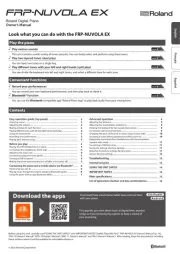
27 Augustus 2025
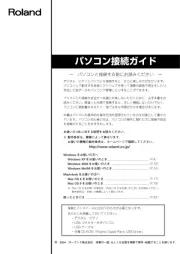
16 Mei 2025

13 Mei 2025
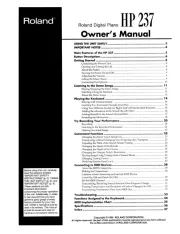
12 Mei 2025

12 Mei 2025
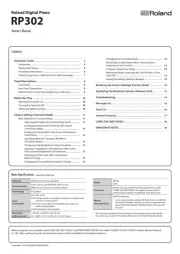
1 April 2025
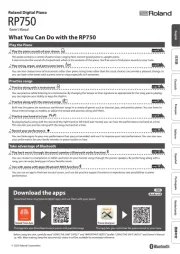
27 Januari 2025
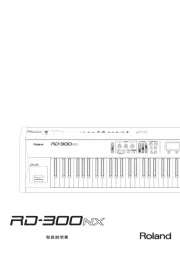
16 Juni 2024

10 Juni 2024

14 Mei 2023
Handleiding Piano
- Alesis
- Startone
- IDance
- Native Instruments
- Nord
- Technics
- Yamaha
- Casio
- NUX
- Carry-on
- Max
- Thomann
- Viscount
- Korg
- Kawai
Nieuwste handleidingen voor Piano
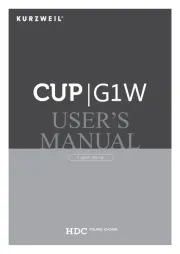
25 Augustus 2025
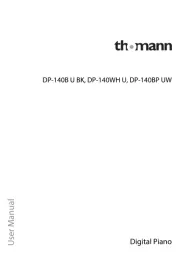
4 Augustus 2025
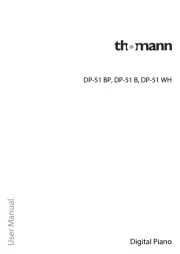
4 Augustus 2025
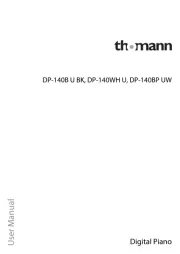
4 Augustus 2025
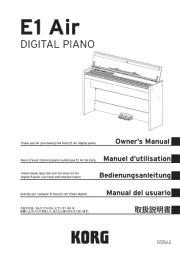
30 Juli 2025
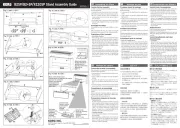
29 Juli 2025
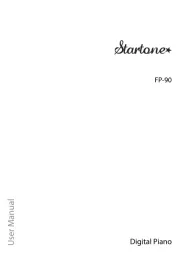
21 Juli 2025
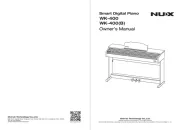
19 Juli 2025
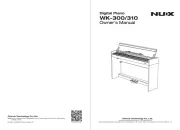
17 Juli 2025
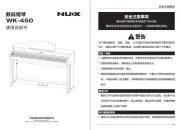
17 Juli 2025